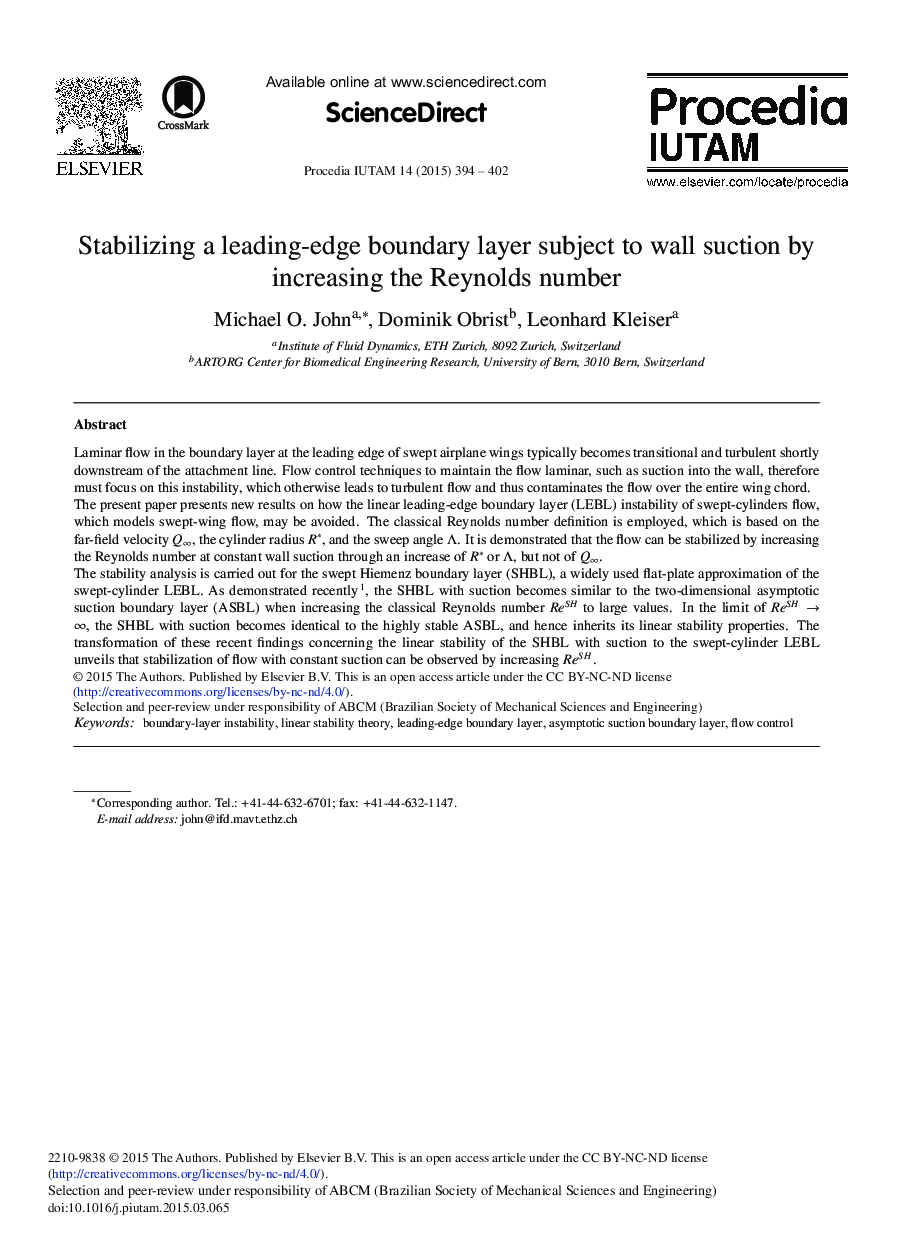| کد مقاله | کد نشریه | سال انتشار | مقاله انگلیسی | نسخه تمام متن |
|---|---|---|---|---|
| 864827 | 1470835 | 2015 | 9 صفحه PDF | دانلود رایگان |
Laminar fiow in the boundary layer at the leading edge of swept airplane wings typically becomes transitional and turbulent shortly downstream of the attachment line. Flow control techniques to maintain the fiow laminar, such as suction into the wall, therefore must focus on this instability, which otherwise leads to turbulent fiow and thus contaminates the fiow over the entire wing chord.The present paper presents new results on how the linear leading-edge boundary layer (LEBL) instability of swept-cylinders fiow, which models swept-wing fiow, may be avoided. The classical Reynolds number definition is employed, which is based on the far-field velocity Q∞, the cylinder radius R*, and the sweep angle Λ. It is demonstrated that the fiow can be stabilized by increasing the Reynolds number at constant wall suction through an increase of R* or Λ, but not of Q∞.The stability analysis is carried out for the swept Hiemenz boundary layer (SHBL), a widely used fiat-plate approximation of the swept-cylinder LEBL. As demonstrated recently 1, the SHBL with suction becomes similar to the two-dimensional asymptotic suction boundary layer (ASBL) when increasing the classical Reynolds number ReSH to large values. In the limit of ReSH→∞, the SHBL with suction becomes identical to the highly stable ASBL, and hence inherits its linear stability properties. The transformation of these recent findings concerning the linear stability of the SHBL with suction to the swept-cylinder LEBL unveils that stabilization of fiow with constant suction can be observed by increasing ReSH .
Journal: Procedia IUTAM - Volume 14, 2015, Pages 394-402
